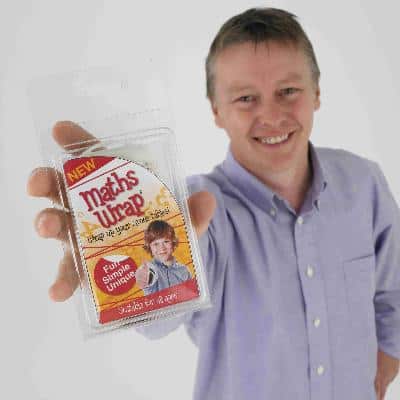For many children learning multiplication tables can be difficult. It’s an essential part of the curriculum and is helpful in a number of ways. From being comfortable with numbers, to estimation skills, the times tables should never be very far from Year 3-5 homework. There’s quite a few fun ways to learn times tables and lots of different toys.
In past times, and still in many parts of the world, most children would learn by rote. This involved starting each lesson by reciting all the tables from x1 to x12. Many parents were taught this way and are still able to remember them easily.
There has been a lot of discussion as to whether this method led to ‘understanding’ rather than just chanting.
Whatever your view, few people doubt the benefit of learning multiplication – whether to improve estimation skill or to use as a springboard to more complex maths.
So – how can you help your child to effectively learn? There are three basic methods:
Learn by rote.
Encourage your child to recite the times tables on the school run each morning / afternoon. Ask them at odd times throughout the day, including weekends. Look for opportunities to reinforce – such as answering “can I have an ice-cream?” with “if you tell me your 8x times table.” Ask your child to write out the 6x table after dinner to get out of washing up. (I’ll do that anytime!). View some of the amazing facts on this site for number multiplication. Try them out without using a calculator.
Make it fun without being overbearing. Perhaps encourage your child to create a rap? Don’t forget to send your video – it might be featured on the site.
Buy something
There’s an excellent product called Maths Wrap that encourages children to learn their times tables. Studies have shown that ‘kinesthetic’ teaching, learning by doing, can have a significant impact on remembering facts. Maths Wrap has been endorsed by teachers and bought by schools. A recent study claimed to double a child’s ability over a 5 week period. It’s all good stuff and I’m delighted because I developed it!
Either way lots of children respond by something they can learn and play with. There’s an amazing range of other products from snap cards to cube books. Many might be, possibly, nearly as good as Maths Wrap.
Learn what you need to
This one is a little controversial but bear with me. One of the criticisms of learning by rote is that there is no understanding. It’s important that children appreciate the relationships between numbers rather than just reciting them.
Much of primary maths is “derived” ie. building on what you know. There’s also been quite a bit of effort to encourage children to learn “halving and doubling.” So why not just learn the key times table facts rather than the whole lot? When you’re then asked a question you can then use these to answer.
The key facts are
8 x 7=56, 4 x 9 = 36, 11 x 12 = 132, 7 x 9 = 63, 6 x 7 = 42, 12 x 8 = 96, 4 x 7 = 28, 6 x 8 = 48, 9 x 12 = 108, 8 x 9 = 72, 11 x 11 = 121, 6 x 9 = 54.
I’ve mixed them up a bit as it might be better for the child to learn out of order. Just learn these off by heart and use them to work out any other tables.
Whatever you do learning multiplication should be fun. A good approach would be to use a mix of the three methods. It’s a fundamental skill that will be useful throughout school and life. Try not to let it take over though!
Finally there is a way to use your hands to work out from 6×6 to 10×10 tables. It’s quite good fun and works.
Times tables using your hands!
…or you could have your own ideas.
